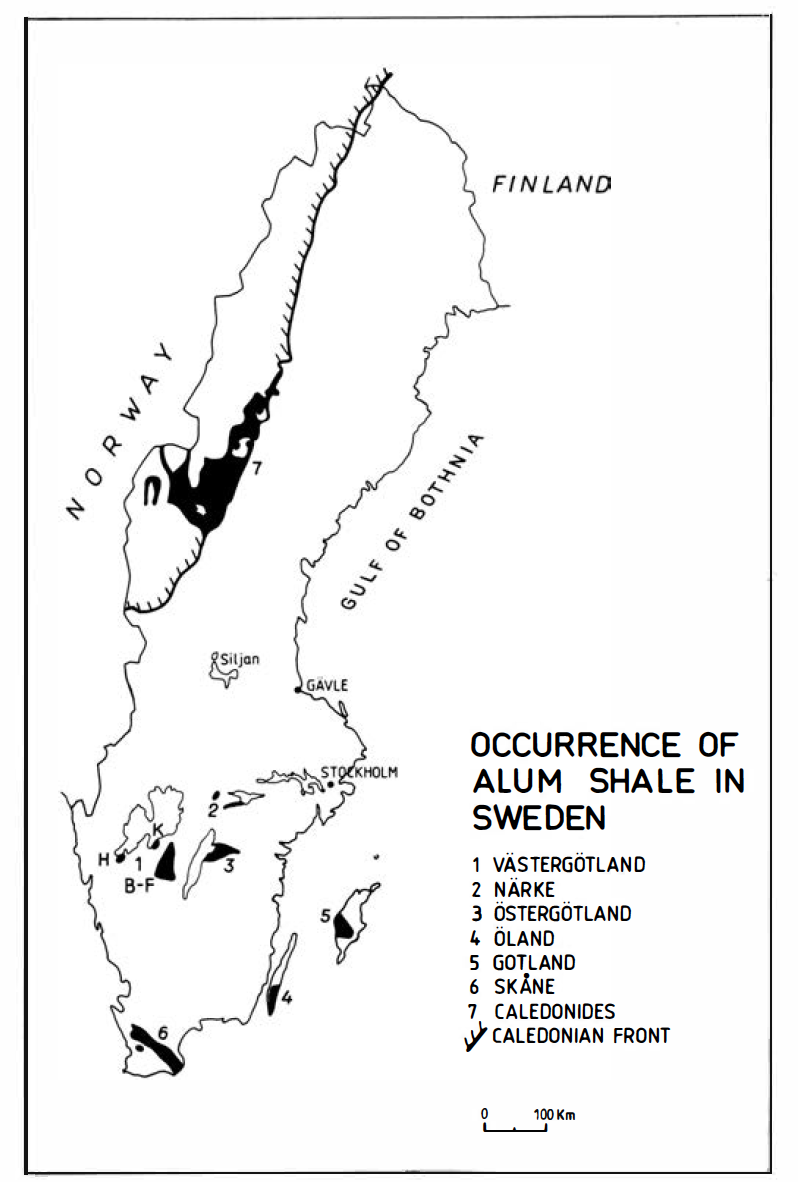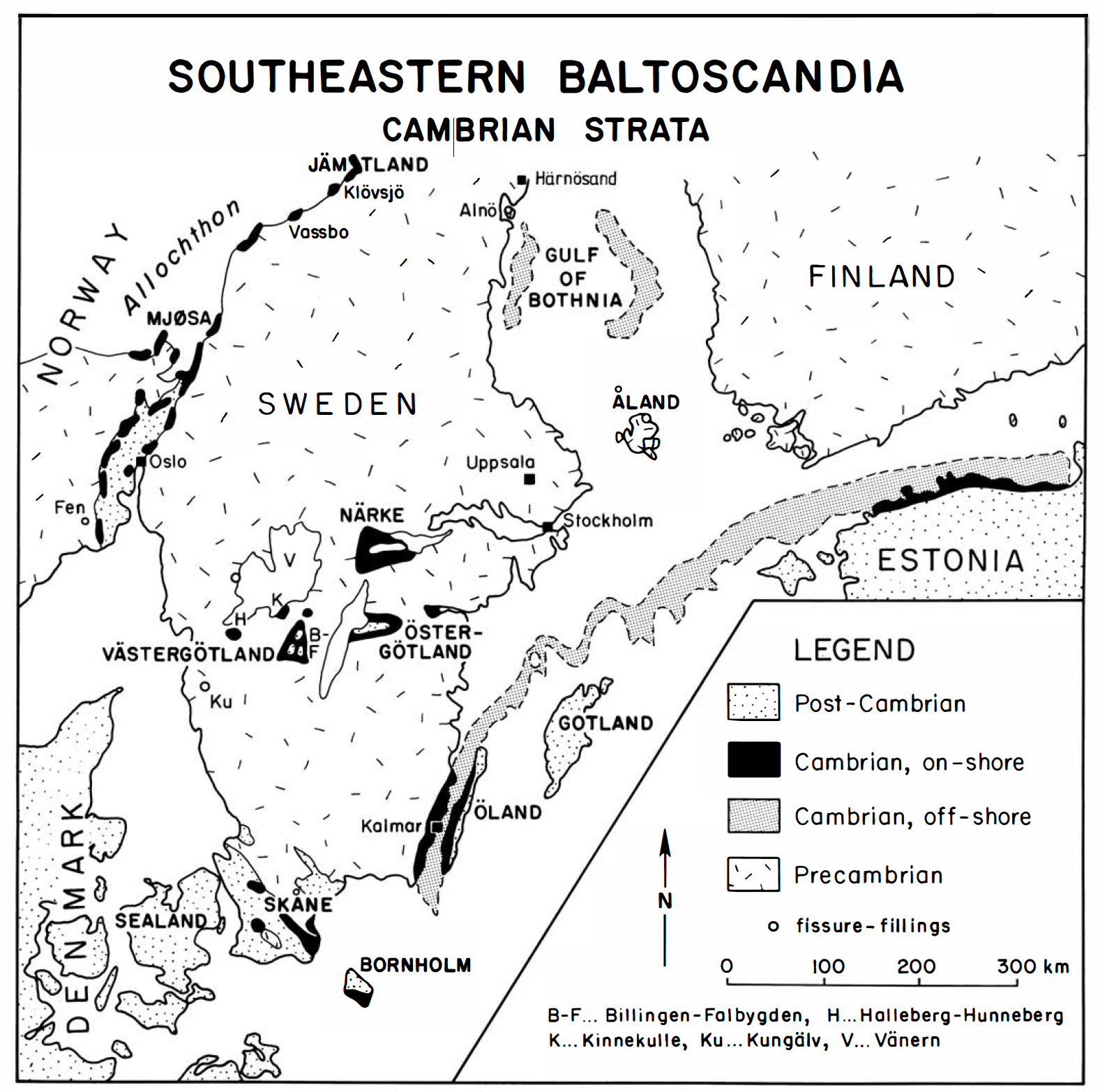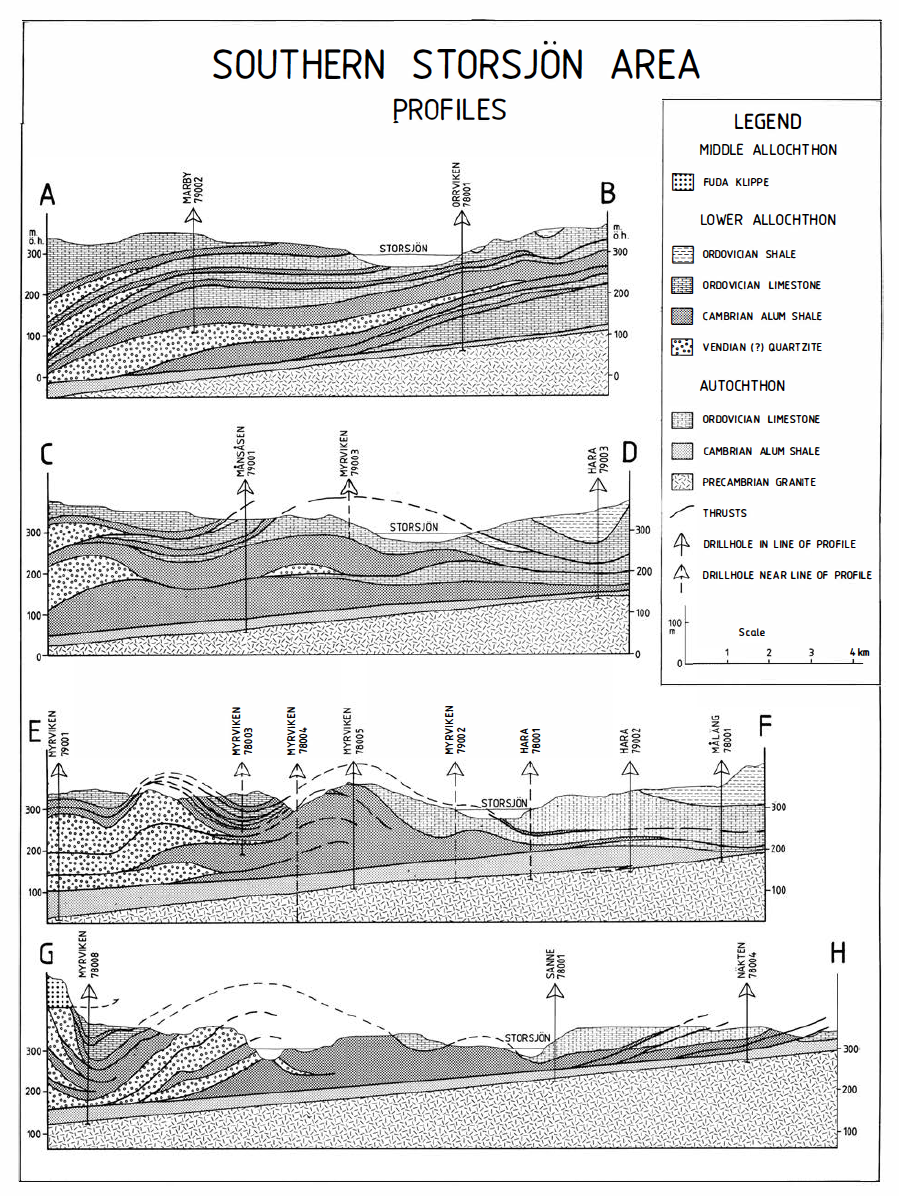In my last blog I wrote that not much has been published regarding the 28 deep drill cores made by SGU around Myrviken between 1977 and 1979. But I was not entirely correct. David Gee alerted me to a figure that was published in the SGU report by Andersson et al. (1985) (see reference below). In the appendix to this report is a figure showing the stratigraphy of Myrviken drill core 78005 as well as measurements of organic carbon, uranium and vanadium. The report can be downloaded from SGU’s website.
The SGU report, which was published long ago, is really interesting as it summarizes what was then known about the Alum shale in terms of its geological occurrence in Sweden, its geochemistry and its importance as an economic resource. It may even have laid the foundation for the intensive surveys that followed during later years. But this is just pure speculation from my side!
Here I cite from the Introduction chapter: That the Scandinavian alum shales are remarkable for their content of uranium has been known since the turn of the century. The local occurrence within the shales of kolm lenses containing up to c. 5 000 ppm U was reported by Nordenskiöld (1893). More recently the shales have been shown to contain unusually high concentrations of other trace elements, particularly vanadium, molybdenum and nickel and some rare earth elements. … The presence of the trace elements, along with a high organic carbon content provides the basis for exploitation. That the highest concentrations of the various components of economic interest are seldom enriched together in the same stratigraphic unit in the formation or within any one area is a major frustration to exploitation. The possibility of finding more favourable combinations of trace elements than those known today presents one of the chief incentives for further prospecting (Andersson et al. 1985, p. 5).
Figures 3 and 4 in the report by Andersson et al. (1985) also show the general distribution of the Alum shale in Sweden (see below). Both the Alum shale in Jämtland and the Alum shale in Skåne are now in the focus as an important resource for vanadium.


For Jämtland and the southern part of Storsjön, Figures 18 and 19 in Andersson et al. (1985) (see below) show a geological map with the location of the SGU drill cores (left) and a detailed transect across the area (right). The transect shows how the various layers are stacked upon each other. Core Myrviken 78005 for which various analyses exist, was drilled where the Alum shale was thickest. This enormous thickness is due to tectonic forces, which pressed layers upon layers of Alum shale upon each other. This also means that there is no real stratigraphic order in the whole pile of Alum shale because older layers are located on top of younger layers. Shortly – the Alum shale geology in Jämtland is pretty messy when compared to Skåne’s simple stratigraphy with more or less horizontal layers.


The complicated pattern of stacked upon Alum shale is certainly not a dream situation for a geologist, who would like to see some order, or at least would like to understand what is oldest and what is youngest and how the depositional environment of the Alum shale evolved. But as an economic resource it does probably not matter, because the only thing that is interesting is, how much of the so-called critical metals can be found. And there is pretty much of these, especially when it comes to vanadium! Just look at the Figure below, which is Figure A7 in Andersson et al. (1985). It shows the organic carbon content (%), uranium (ppm) and vanadium (ppm) in Myrviken drill core 78005.

The presence of so much vanadium in core Myrviken 78005 or better the repeatedly occurring very high vanadium contents are accompanied by slightly lower uranium contents and vice versa. My non-scientific guess is that the intervals with high vanadium could correspond to what is known in Skåne as the Dictyonema shale, because vanadium as high as 2000 ppm only seems to occur in the youngest part of the Alum shale. In Skåne this youngest part of the Alum shale is only up to about 25 m thick. But in Jämtland it seems that the youngest part of the Alum shale was several times squeezed into the older part of the shale. This squeezing and stacking thus makes the whole series interesting as an economic resource, because vanadium in higher concentrations is found as far down as 130 m depth.
I am not so much interested in the vanadium content of the shale, but rather in the Alum shale’s uranium content. And this is very high. On average between 100 and 200 ppm, and in some horizons it is actually higher than 200 ppm. Now these are really high concentrations. Imagine that the companies who want to exploit the Alum shale for vanadium will need to deposit the remaining shale, once they have leached out the vanadium. Where will all these enormous piles of Alum shale waste be stored? Waste that contains huge amounts of uranium! Which measures will be taken so that no uranium or none of the other toxic elements that are known to be contained in the shale, will leak out into the groundwater or into the nearby lakes?
Up to date there is no technology available (although some companies say that there is) that would allow safe mining of Alum shale and safe storage of the mining waste. Unless such a technology has been developed and scientifically tested, I’d rather keep my fingers off the whole business.
Yes, we may need these innovative metals, and yes the Alum shale contains many of these, but they cannot be mined before adequate and really sustainable technologies have been developed so that groundwater, soils, forest and agricultural land will not be polluted for centuries to come. Do we not want to leave a healthy environment to our children and grandchildren?
Or are we so blinded by talks of economic progress and the need for a rapid transition into green (!) / fossil-free technologies that we keep forgetting where the stuff that should help us transition comes from and what it actually will mean to dig it up and store the waste? Some serious reflections would be appropriate.
References:
Andersson, A., Dahlman, B., Gee, D. E. and Snäll, S. (1985). The Scandinavian Alum shales. Sveriges Geologiska Undersökning. Serie Ca Nr. 56, 54 pp.


Thanks for a very informative blog! I am really glad that you, with your large documented geological knowledge, write these texts that helps us laymen to understand what is going on when these companies suggest to exploit our earth.
Since long time back I have thought about the possibilities of exploiting the enormous amounts of mining waste that is piled all over Sweden. Tavistock is also something that you also have touched upon several times. Reading your latest posts, where you report the concentrations of V, U, Mo, and more elements, I start to wonder how they compare to the concentrations in the Alum shale. Is there any available information about this? It would be very good to know if one could put the idea of exploiting the waste piles into context and say for certain that it would be better to go elsewhere to dig for e.g., V.
Once again, thanks for a very informative blog.
Best regards Jens Birch.
Hallo Jens,
nice to hear that you liked by blog.
The concentrations of V, U, Mo I have reported are the concentrations that are found in the alum shale. I have no information about how much V for example is contained in all the various mining waste deposits. There are so many of them and their metal contents vary. However Bert Allard has estimated how much V may be contained in Kvarntorpshögen (see one of my blogs) and efforts are also ongoing to understand how old mining waste could be recycled to extract metals. Some mining companies also try to extract more than just a few elements. But much of this seems still to be in its infancy.